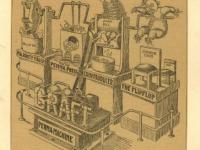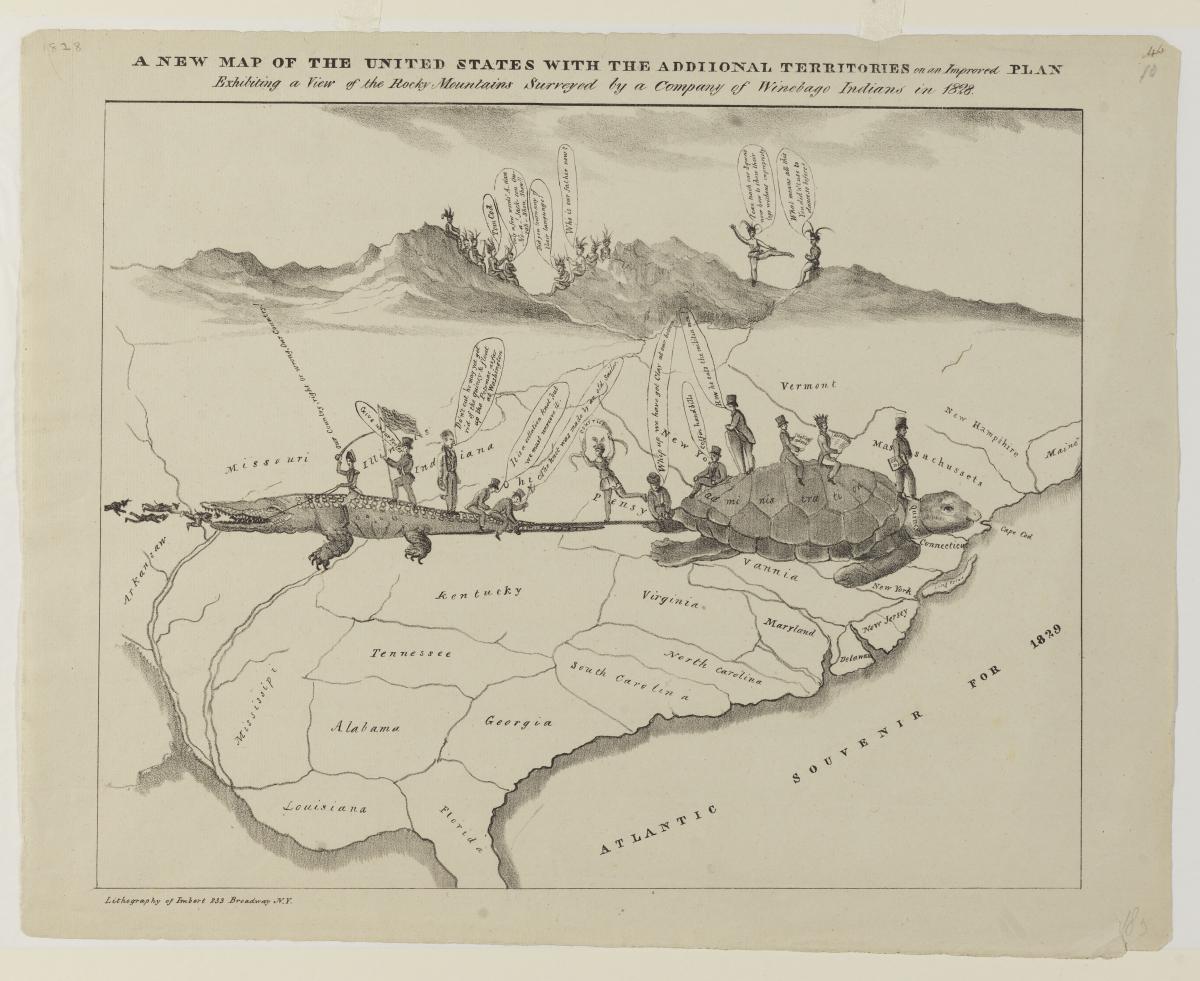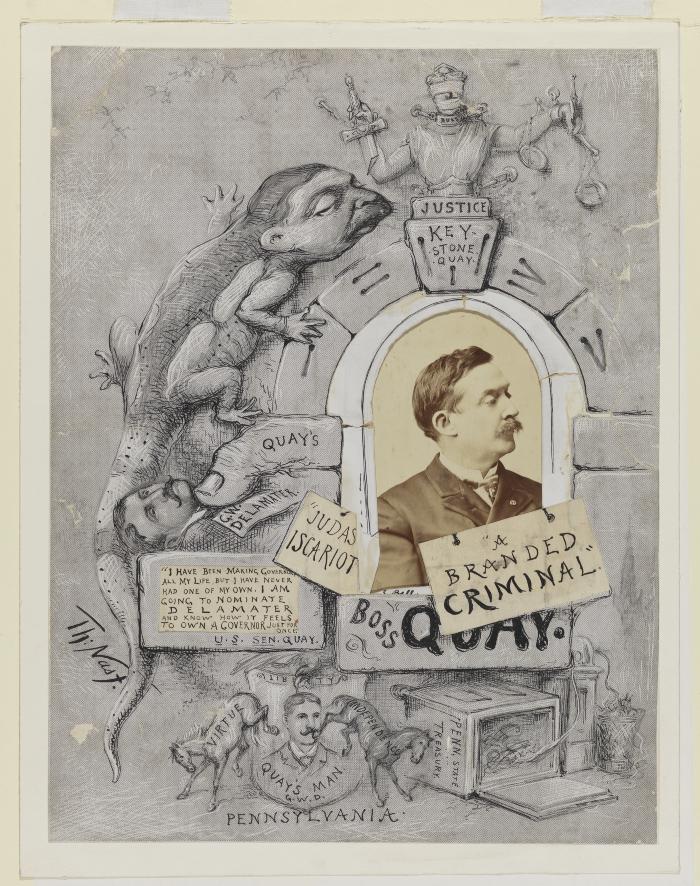“Drawn and Quartered: Cartoons from the Collection” opened at HSP on April 22. This document display presents a sampling of political cartoons from HSP’s collections spanning from the 1700s to the early decades of the 20th century. These cartoons, and many more, will be part of HSP’s Historic Images, New Technologies (HINT) project. For those who are unable to come in to HSP to see these cartoons in person, digital copies of the cartoons on display (and a few that had to be cut at the last minute for space reasons) can be viewed here:
http://digitallibrary.hsp.org/index.php/simpleGalleryEdu/Show/displaySet/set_id/662
The display is organized into four glass cases. A case of early American political cartoons features engravings and prints commenting on British taxation, the formation of the earliest American political parties, and Jacksonian democracy. In this section is the first American political cartoon to be lithographed:
A New Map of the United States with the Additional Territories on an Improved Plan (circa 1829). Lithograph by Anthony Imbert
A section on cartoons of the Civil War displays commentary on debates over the expansion of slavery into western territories in the 1850s, the formation of African American regiments, and the 1864 election that pit Abraham Lincoln against “Peace Democrat” George McClellan.
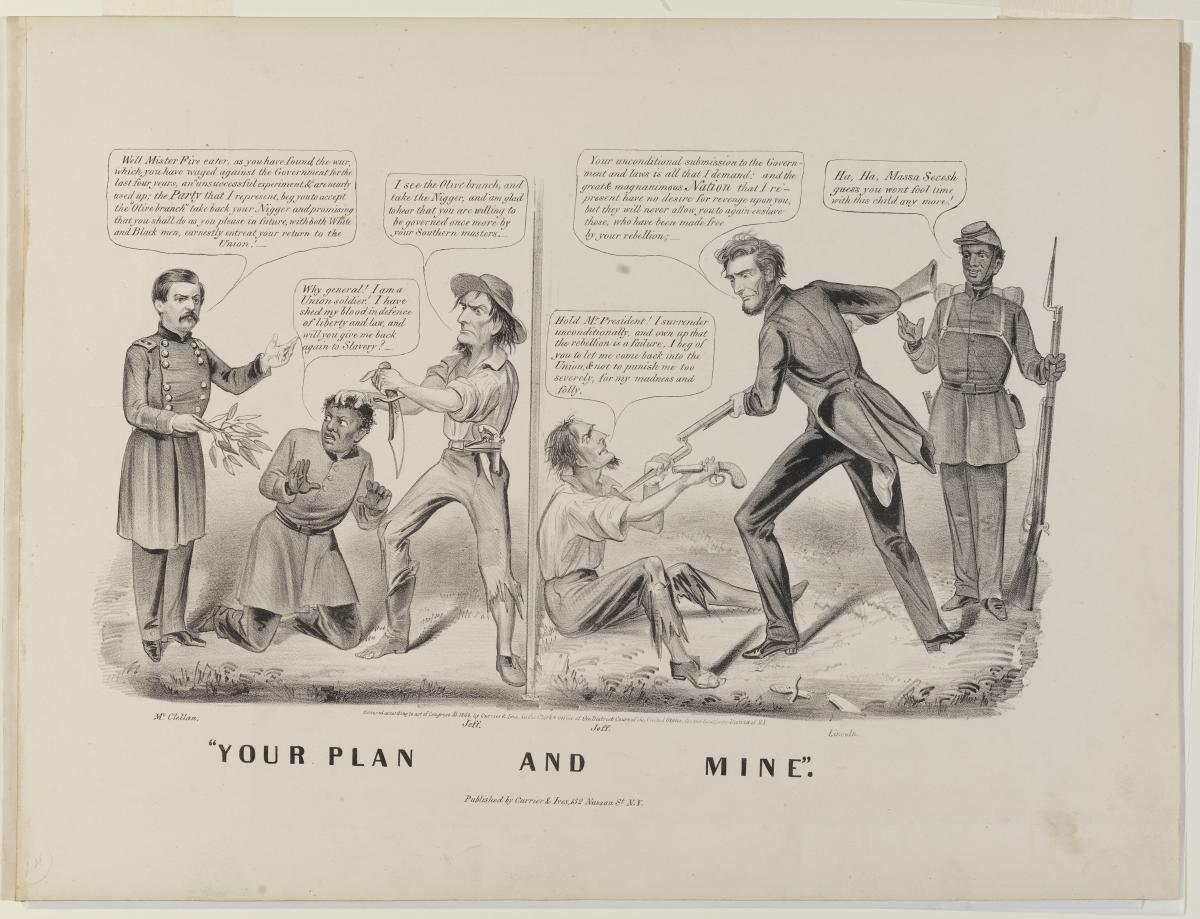
Your Plan and Mine (1864). Artist unknown; lithograph by Currier & Ives
A section on cartoons of the Gilded Age and Progressive Era features the work of political cartoon legend Joseph Keppler, who cofounded and drew for the popular illustrated magazine Puck, and local cartoonists such as John L. De Mar of the Philadelphia Record.
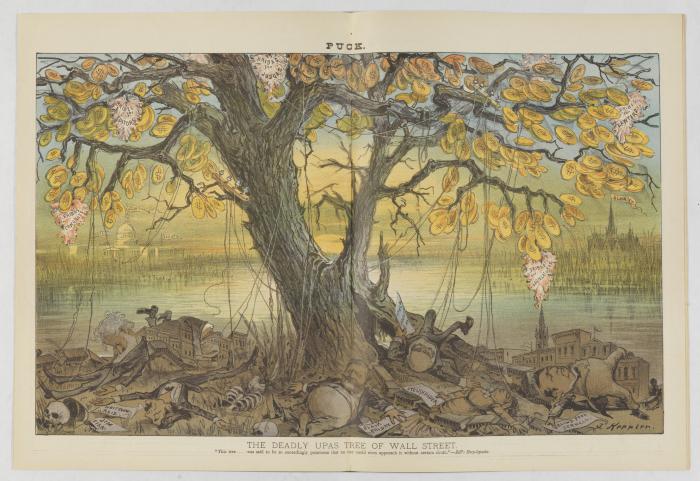
"The Deadly Upas Tree of Wall Street," in Puck,
August 30, 1882. Chromolithograph by Joseph Keppler
Finally, a section on Pennsylvania politics focuses on the unique personalities, scandals, and reforms that have shaped the Quaker state. This section boasts one of my favorite finds: an original political cartoon (that is, a pre-published draft, showing original pen-and-ink and collage work) by Thomas Nast, one of America’s most famous and influential political cartoonists, portraying Pennsylvania political “kingmaker” Matthew S. Quay in a sinister light.
The Silence of Matt Quay (1890). Original cartoon by Thomas Nast
The display is free to view and runs until June 10...come check it out! And please follow our progress on the HINT project, which will feature 500 political cartoons from HSP's collections.

